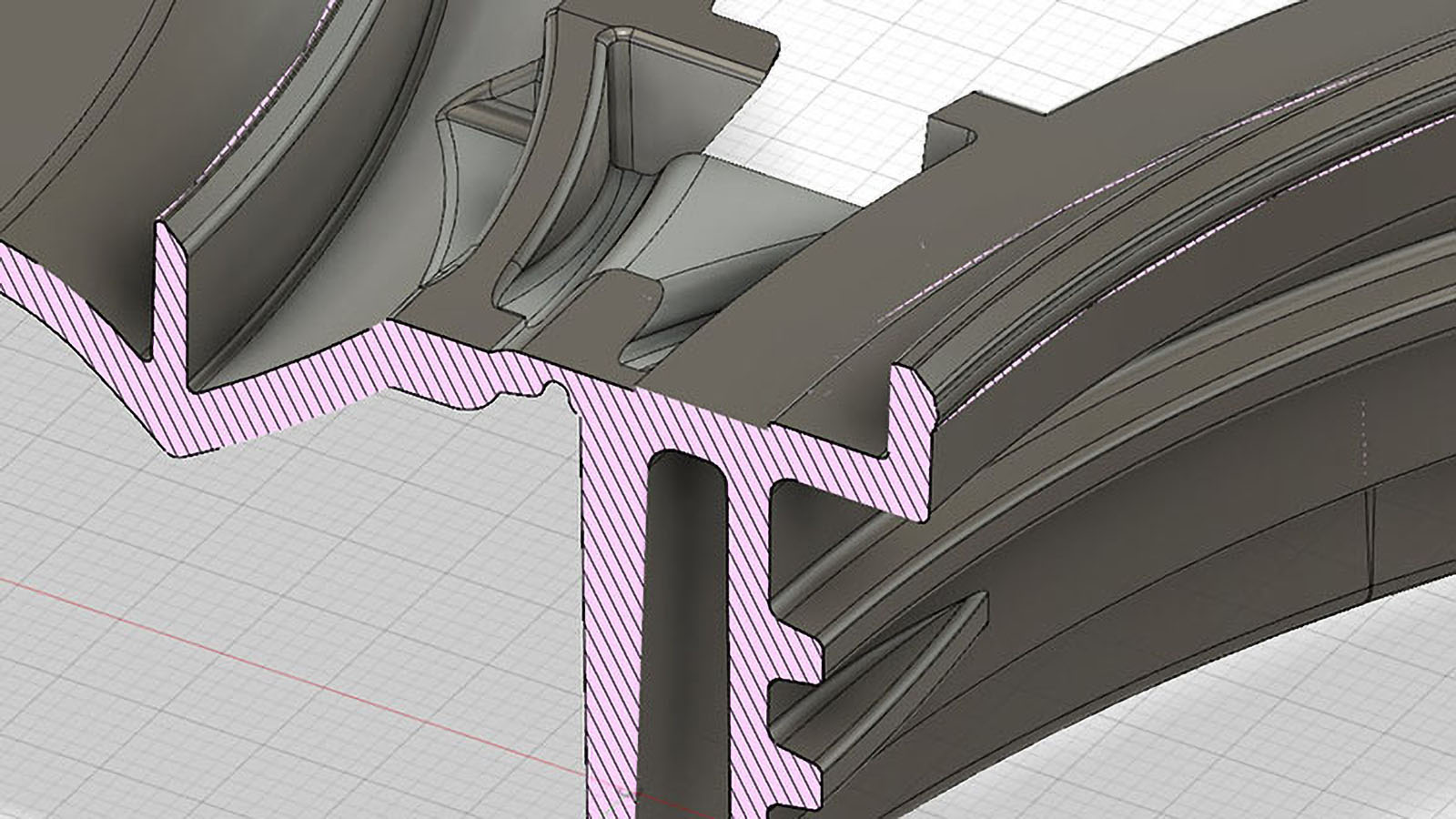Plastics have extremely diverse capabilities, from complex assemblies to dynamic functional movements. For applications like hinge and clip mechanisms, correct design principles and material choice are critical to the longevity of the molded part.
Living Hinges
Living hinges are common for molding components like container caps. The container is likely to be blow molded, and the cap will likely be injection molded. Since the cap consists of a base and a lid, the two can be connected by a living hinge. Not only does this make the cap easy to use for the consumer but it also saves on manufacturing costs and assembly time. Making a long-lasting living hinge comes down to proper design and material choice.
Living hinges are weak points in the part where the two halves of a part come together. This weak area needs to be thin enough to be flexible but thick enough to handle hundreds or thousands of movements. The specific design comes down to the individual part and how it is expected to function. The hinge area could be .01 inches thick or more but will vary by application. It’s also important to consider which direction the hinge will be moving and design accordingly. The following is a cut-away of a mold we built for a condiment bottle cap. This hinge has a unique design that gives the cap a slight spring load to hold it open.
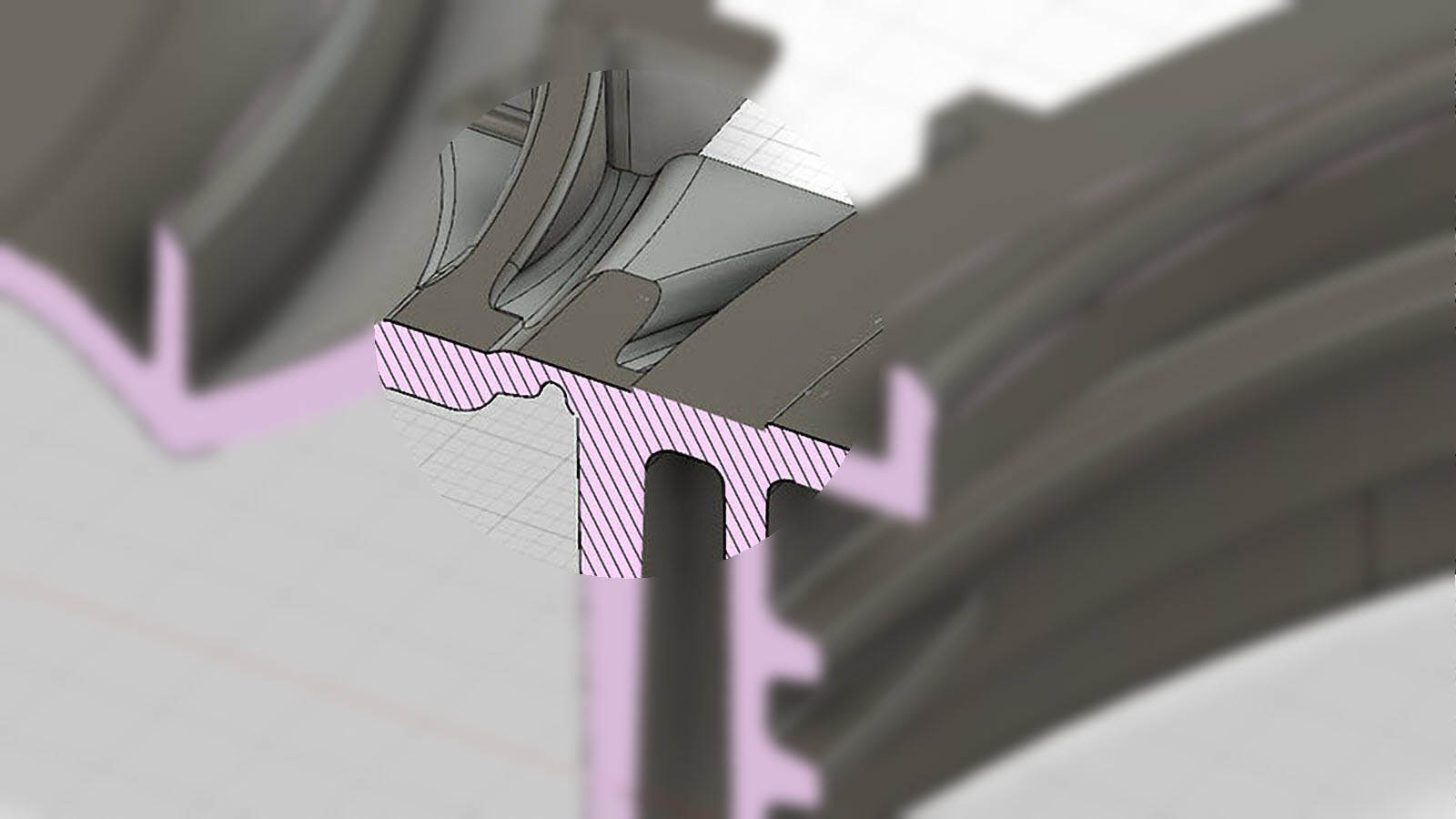
In the cut-away (dashed line face) you can see the thin area that makes the hinge. Further down the hinge, you can see the mechanism for creating the spring action. Since the part is molded in the open position, the cap will naturally attempt to return to that position. For a consumer product like a condiment bottle cap, that’s a convenient feature. You can imagine though how that section of material is flexing and bending. Having to do this several times without fatigue makes material choice important.
Polypropylene and Polyethylene are good choices here. They have the elasticity and memory to withstand the movement of the hinge. They’re also cheap and capable of handling thickness changes in the wall section created by molding a hinge. This design is an exception to the uniform wall thickness rule for injection molding. Best design practices would advise against injecting through a large area, through a thin wall section, and then to another large area. However, with the right molding process, these materials handle it just fine.
Because the plastic is flowing through a thin wall section and into a larger section, the gate location is important. It’s best to have the material flowing evenly and perpendicular to hinge. In another post on warp, we discussed material flow and how the molecules of the polymer tend to align in the direction of flow. Making sure the flow is perpendicular to the hinge helps ensure the polymer molecules are layered across the hinge, which promotes strength. It’s also critical to avoid any weld lines in the hinge area. For example, it would not be wise to have two gates to fill the larger areas of the part and have the plastic flow meet at the hinge.
Clips
Like hinges, clips actions require careful attention to design and material selection. Depending on the amount of movement required and the life expectancy, different design standards will be used. For example, if the clip action will be used several times through its life, it becomes more important to make sure it will last. However, if a clip will only be used once to assemble a part, a broader range of materials and less strict design guidelines can be deployed. Here are a few examples of parts with clip actions we have molded at Basilius.
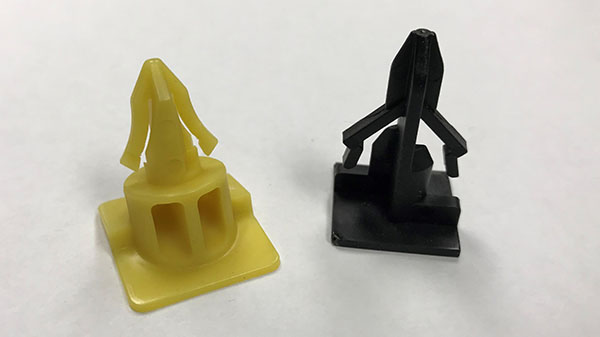
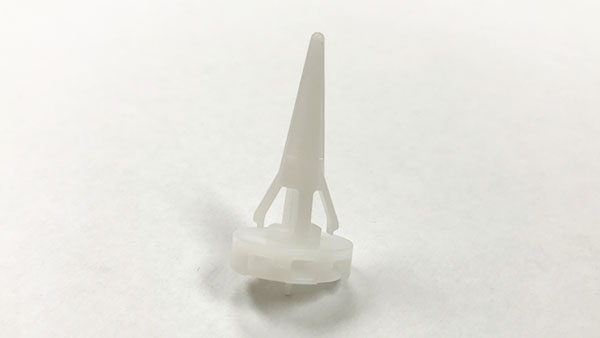
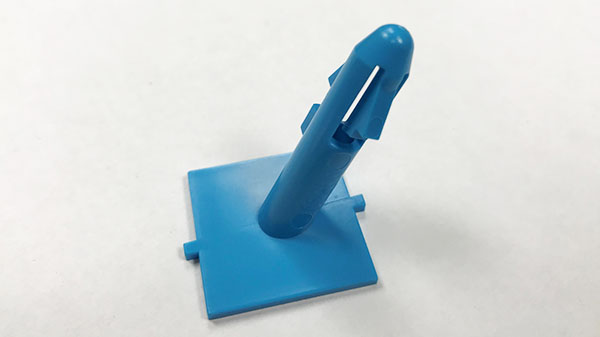
The clips in the images are designed to only function once. They are used to hold another component in place that will theoretically never be replaced. You can see that the clip actions do not necessarily have a specific design. These parts are also made from a wide array of materials, including ABS, Acetal, PBT, and Nylon. Other materials, including fiber-reinforced polymers, could be too strong and could be too brittle to handle the required flexing.
Hinges and clips are common design aspects in injection molding. When designing the part, it’s important to understand the application and apply design best practices based on the application. Depending on the function of the part, material selection can become more critical. Hinges are likely to see hundreds or thousands of cycles, so choosing a material that will withstand the number of cycles like PP or PE is important.
This post is part of our Designing for Injection Molding series. Check out more here.

